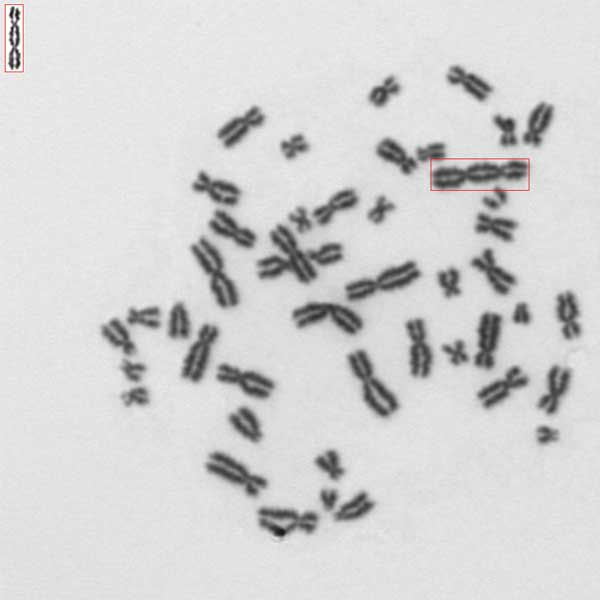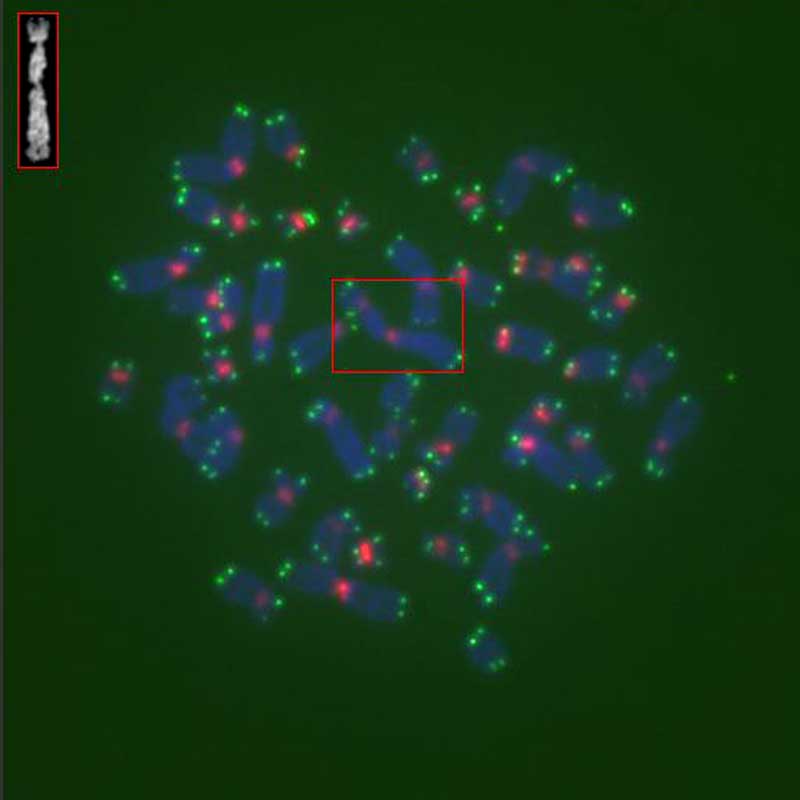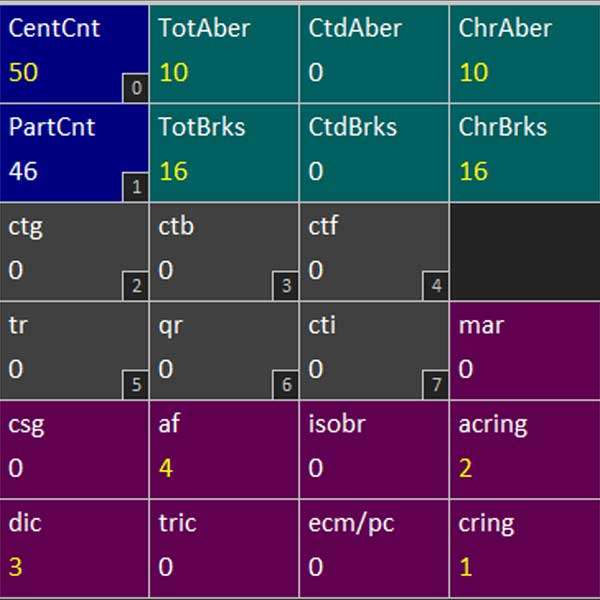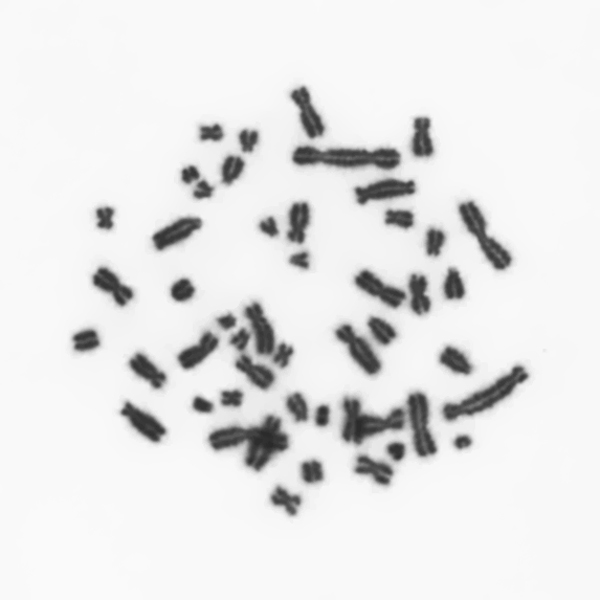Aberrations
On-Screen Quantification of Rearrangements
Perfect automated and semi-automated tools for analyzing chromosomal aberrations away from the microscope.
The analysis of chromosomal aberrations is a well-established method for assessing DNA damage in-vitro and in-vivo. Due to the solid documentation of the test in the literature, it is widely used in pre-clinical toxicology (see OECD guideline #473) and as a reliable method to estimate radiation doses in biodosimetry. Unfortunately, analysis of chromosomal rearrangements is time consuming and tedious. Additionally, it requires well-trained researchers to perform correct interpretations of the findings. Especially in emergency situations, for example if the assessment of aberrations is used for biodosimetry after a large-scale radiation accident, this may cause delays leading to critical situations. MetaSystems has created a portfolio of tools for helping researchers in the chromosomal aberration analysis. MetaSystems provides a smart scanning solution for automated and semi-automated aberration analysis.

Dicentric chromosomes, i.e., chromosomes with two centromeres which originate from the rearrangement of two independent, damaged chromosomes, are frequently taken as an indicator lesion for chromosomal aberration studies. Especially in radiation biodosimetry, where time is a crucial factor for the analysis, the use of dicentric chromosomes as endpoint is advantageous over the often complex analysis of the whole damage. It was shown in many studies that the rate of dicentric chromosomes increases by dose, and the features of the dose-effect relationship are also specific for certain radiation types.
The Metafer DCScore package for the detection of dicentric chromosomes is the perfect solution for this problem. The software identifies and counts dicentric chromosomes automatically, unattended, and in a high throughput mode. It is extremely fast, and results are highly reproducible.
All detected dicentric chromosomes are highlighted in the metaphase. A customizable scoring sheet shows the number of dicentric chromosomes in the selected metaphase and allows for manual corrections. Of course it is possible to re-locate any metaphase for inspection.

Scoring parameters are user definable, and they can be adjusted with the integrated self-optimization algorithm. Identification of dicentric chromosomes is done based on morphology criteria, but optionally the Metafer DCScore package also supports the evaluation of telomere and centromere signals of FISH probes.

Treatment of cells with DNA-damaging agents can result in irreparable lesions in both strands of DNA. These damages may lead to chromosome breaks and rearrangements, which are microscopically visible as chromosomal aberrations in metaphase preparations. The in-vitro chromosome aberration test using cultured mammalian cells is a sensitive method to predict environmental mutagens and carcinogens. The test is widely used in pre-clinical toxicology studies, the OECD has published a respective guideline (OECD guideline #473), and the assay can be performed in accordance with Good Laboratory Practices (GLP).

MetaSystems has created a semi-automated workflow for the on-screen analysis of chromosomal aberrations. All tools are available as features of the Metafer slide scanning platform. Studies can be designed by an administrator, and all slides in a study can be encoded to avoid scoring biases. The metaphase finder then finds and acquires metaphases. Images and/or original metaphases can be analyzed on screen, and aberration counts can be easily entered into user-configurable scoring sheets. Once a study is completed, the administrator is able to decode the slide names, to print or export results reports, and to do statistics (for example with the Metafer's Chi-square calculator).
All parts of the workflow are highly customizable. Though each Metafer system comes with a database of aberration classes, users can easily add other ones. The scoring sheets can be adapted to the required aberrations, and keyboard shortcuts can be assigned to each field for easier editing. Finally, all reports and export file formats can be set to exactly match the requirements. The whole test can be performed in full compliance to the GLP regulations (including multi-level user management, audit trails, and protected data and settings files).
MetaSystems has created a semi-automated workflow for the on-screen analysis of chromosomal aberrations. All tools are available as features of the integrated scanning system operated by the Metafer software. Studies can be designed by an administrator, and all slides in a study can be encoded to avoid scoring biases. Metaphases are found and captured automatically. Images and/or original metaphases can be analyzed on screen, and aberration counts can be easily entered into user-configurable scoring sheets. Once a study is completed, the administrator is able to decode the slide names, to print or export results reports, and to do statistics (for example with the Metafer's Chi-square calculator).
All parts of the workflow are highly customizable. Though the Metafer software comes with a database of aberration classes, users can easily add other ones. The scoring sheets can be adapted to the required aberrations, and keyboard shortcuts can be assigned to each field for easier editing. Finally, all reports and export file formats can be set to exactly match the requirements. The whole test can be performed in full compliance to the GLP regulations (including multi-level user management, audit trails, and protected data and settings files).
MetaSystems offers Customization Packages for application workflows using standard Metafer platform functionality. The Customization Packages are not intended for diagnostic use.










